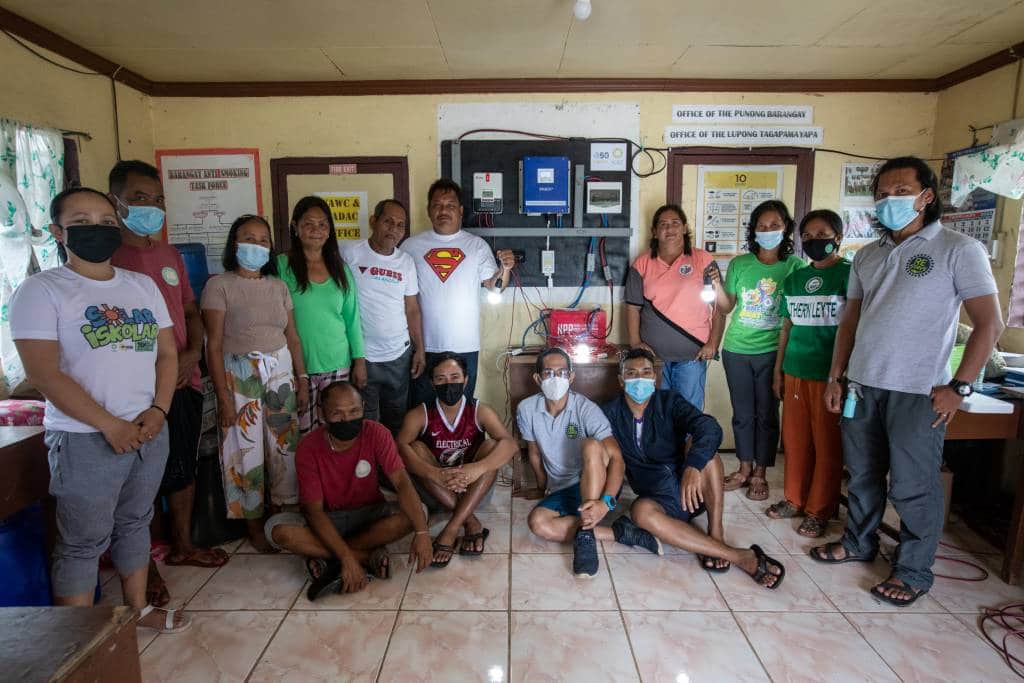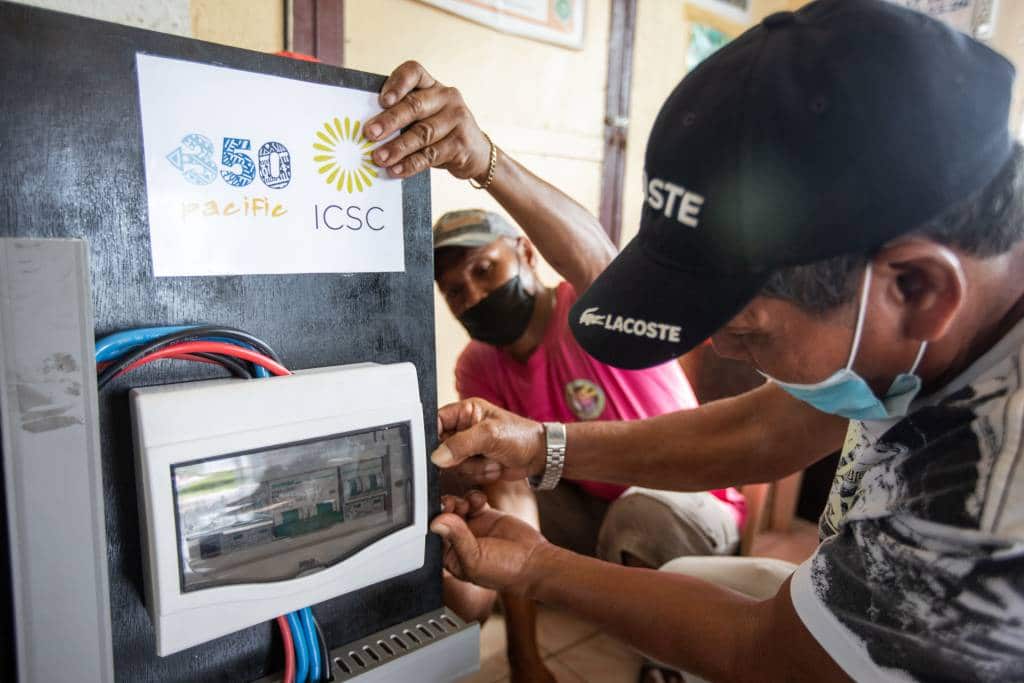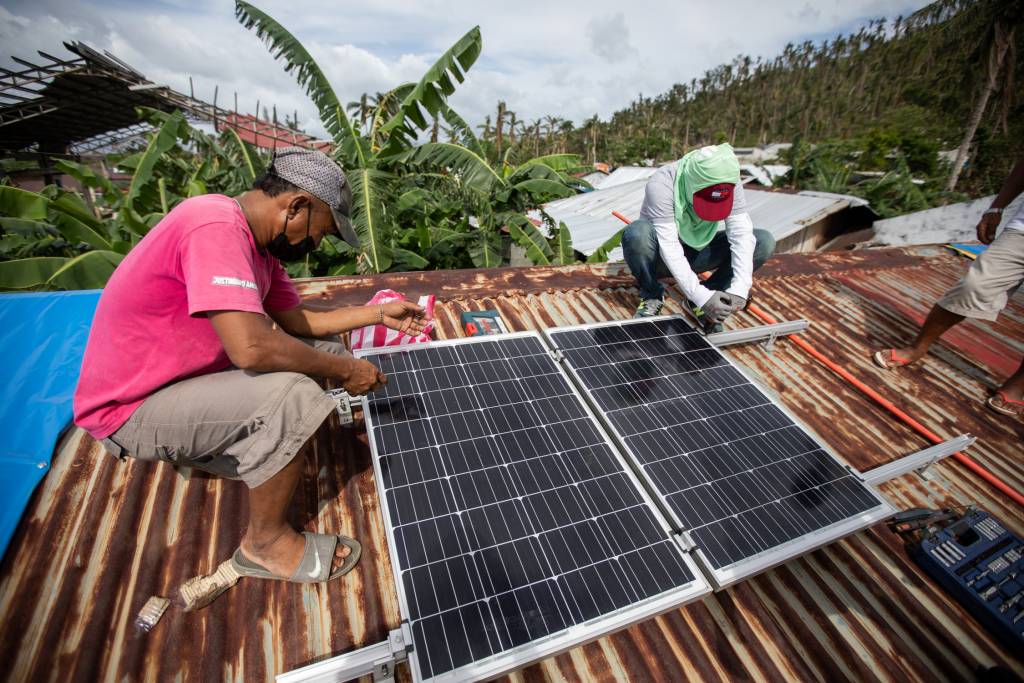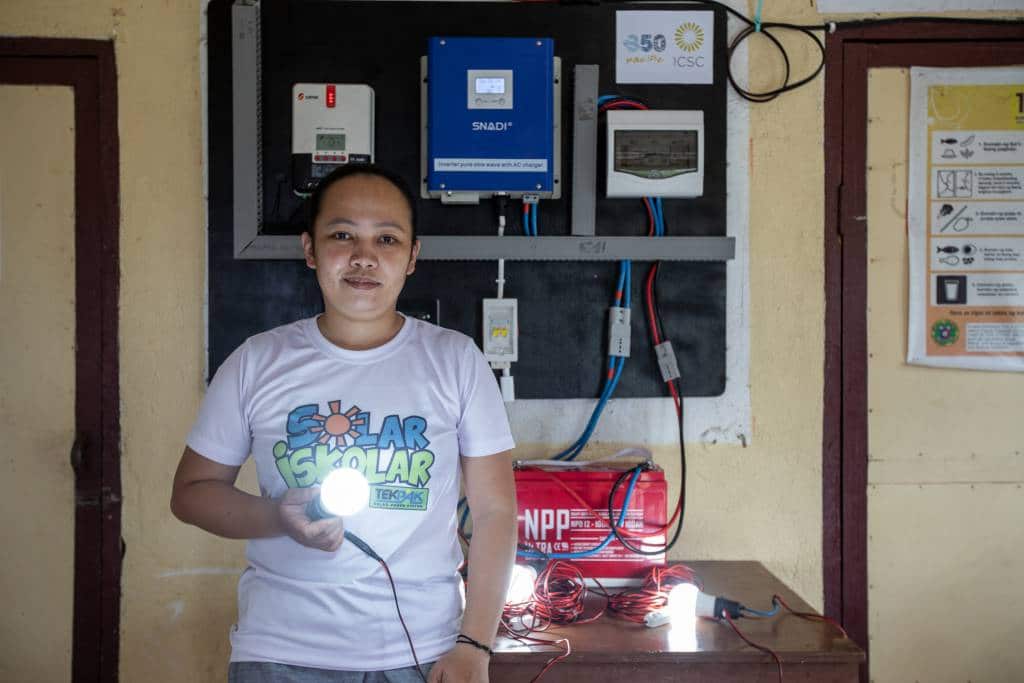In San Agustin, one of the six barangays in Limasawa, a small island in the Philippines, renewable energy is helping rebuild the community after Super Typhoon Odette (internationally known as Super Typhoon Rai) hit in December 2021. Energy access is often overlooked by local governments during and after disasters. Residents are often left with unreliable sources of electricity when power lines are destroyed. Renewable energy provides easy access to electricity post-disaster for island communities like Limasawa.

ICSC staff, RE-serve volunteers, Limasawa DRRMO, and Barangay officials of San Agustin pose in front of the PV system turned over by ICSC and 350 Pacific. Photo: Kathleen Lei Limayo/ 350.org
When Super Typhoon Odette ravaged the Visayas region in the Philippines, it left Limasawa crippled with ninety percent damage to its agriculture, fisheries, and infrastructures. It destroyed houses, uprooted coconut trees, damaged small fishing vessels, and toppled infrastructures (including a seaport, and government buildings).
Among the major infrastructures that were severely damaged was the NAPOCOR-SPUG-owned Limasawa hybrid solar-diesel power plant that supplied 24/7 electricity to the whole island before Odette blew off its solar panels. The households near the center had endured prolonged blackout until February 2022. However, for far-flung barangays like San Agustin, it would take even more months to restore electricity in the community.
Off-grid and community-centered renewable energy becomes a lifeline for barangays like San Agustin. With nothing to power their houses other than expensive and polluting gasoline lamps and diesel generator sets, Limasawa residents find hope from the initiatives of several NGOs who have donated small solar lamps to families post-typhoon Odette. Among these renewable energy initiatives is the 200-watt PV Solar community charging system donated by the Institute of Climate and Sustainable Cities (ICSC) and 350 Pacific.

Local officials Justiniano Amorin and Melecio Bero install the PV system on the wall of the Barangay San Agustin hall. Photo: Kathleen Lei Limayo/350.org

RE-serve Corps volunteer assists the installation of solar panels on top of San Agustin Barangay Hall.
Solar Scholars Paying It Forward to other Climate-Vulnerable Communities
The PV system turnover aims to equip disaster-prone communities like Limasawa with easier access to clean and affordable energy. This solar energy system will power the San Agustin barangay hall and double as a community charging station for the barangay residents.
The 200-watt charging station was assembled in Tacloban by ICSC’s Solar Scholars and was transported across the sea to Limasawa. Solar Scholar volunteers, also from climate-vulnerable communities, are paying it forward and sharing their knowledge with other vulnerable communities. The local officials of San Agustin were also taught how to properly use and maintain the solar energy system.

Jude Capila Alona, a woman RE-serve volunteer from Palo Leyte, poses in front of the solar PV system she helped assemble. Photo: Kathleen Lei Limayo/350.org
Clean and cheaper energy source alternative for development
Renewable energy is an economical choice for small-island communities like Limasawa who have to import crude oil for their diesel generator sets. Residents of small island communities cannot afford diesel to power their homes due to the ever-increasing price of oil. A just transition to a community-centered renewable energy setup is promising for communities like Limasawa as a pathway toward low-carbon development.
The recent IPCC report paints a dire situation for the Earth if global temperatures continue to rise. The climate crisis places small island communities like Limasawa in a precarious situation. Climate-vulnerable communities will experience more extreme weather events. Climate scientists have long urged to reduce carbon emissions to wave off unprecedented effects of global heating. This means moving away from fossil fuels by halting all fossil fuel projects and starting a just transition to renewable energy.
The IPCC report also outlines pathways for governments to pursue climate adaptation and mitigation. As governments and policymakers battle out the details for national and international pathways in the upcoming COP 27, Limasawa residents, on the other hand, are modeling the trajectory of climate resilience and energy democracy in small-island communities: clean off-grid electricity that is safe, renewable, and community-owned, centering justice and equity.